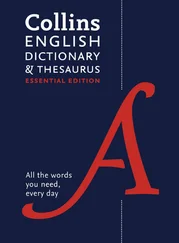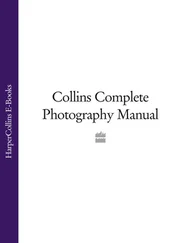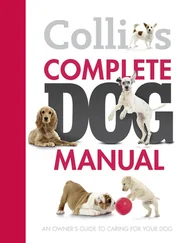1 ...8 9 10 12 13 14 ...25 If you want to cut off even more weight, then buy specific ultralight gear. Weight is reduced by choosing particular fabrics that are thin and light, and by cutting out frills in the design that add weight. There are companies like GOLITE (www.golite.com) that specialize in ultralight gear. These companies have developed a set of interconnected products based on certain assumptions. If you go this route, you’ll need to determine if their assumptions about layering fit your body needs.
This step can get expensive, especially if you already have “regular” back-packing gear, so I suggest taking it a bit at a time. However, there aren’t “ultralight” versions of every type of garment. Instead, look for the lightest weight garment that provides the amount of insulation you need. For example, buy the lightweight fleece jacket and pair it with your rain gear for the same amount of insulation as a heavyweight fleece.
Don’t be fooled into thinking that the only factor you need to look at is weight. Flexibility in a garment, like its venting capability, can make something useful over a much broader temperature range. Also, some “garments” can serve dual purposes, such as a rain poncho that doubles as a tarpaulin for an emergency shelter. Ultralighters hate duplication, so they will take a multifunction item over a single function item every time. Ask typical AT through-hikers and see what they started carrying at first and what they ended up carrying as they learned just what they needed and how to get different clothing items to work together.
One caveat about going ultralight: it’s going to change the way you treat your gear. One of the reasons that things like packs are so heavy is not that manufacturers can’t make them lightweight. It’s that people abuse them so much. So the manufacturer adds a “super-double-extra-kevlar-cordura bottom panel” to the pack so the fabric doesn’t rip when you drop it on a rock. Ultralight gear is specifically not built this way, so you need to handle it carefully.

BOOTS
Your boots are among the most important pieces of equipment that you take on a hike. With every step, they are the direct interface between you and the land. Boots come in an almost infinite array of heights, weights, materials, soles, etc. They should be selected according to your needs—day trip versus multiday, packweight, terrain, season and temperature, your hiking style (traditional versus ultralight), and personal characteristics (e.g., weak ankles), to name a few. And there isn’t one boot that is best for every condition. The boots that are best for a day hike are not the best boots for a multiday winter camping expedition. Boots are an investment. Selecting, fitting, breaking in, and caring for your boots will help them last a long time and will maximize your own comfort.
WHAT KIND OF BOOTS
There’s no one boot that does it all, although there are boots that will handle a pretty wide range of uses and conditions. It’s generally estimated that every pound (2.2 kilograms) of weight in your boots is the equivalent in energy expenditure of adding 5 pounds (11 kilograms) to your back. Lifting your feet up for thousands of steps each day takes a lot of energy.
When you are looking for boots, go with the lightest weight boot that meets your needs. I think about what I need in a boot in relation to what I am doing on the trail. If I am doing an extended mountaineering trip and I’ve got a 60-pound (27 kilogram) pack, I want a stiff boot that extends well over the ankle to provide me with the kind of support I need. This boot is going to be somewhat heavy. If I’m going on a multiday trip and carrying 40 pounds (18 kilograms), I’ll be fine with a lightweight boot that extends just over the ankle. If I’m on a day hike or an ultralight multiday with less than 20 pounds, I can use trail shoes or running shoes. You’ll notice that I defined all of this in terms of my personal needs. I’ve got notoriously weak ankles, so I always opt for a lot of ankle support. Someone else might not need this much support (boot weight) while others might need more. As with clothing systems, you need to decide what your body needs and look for the lightest thing that meets those needs.
Some people bring a second pair of “camp shoes” for use in camp. After a long day it feels good to get out of your boots and air out your feet, especially if they are wet from sweat or rain. Changing to camp shoes can also help reduce your impact at camp. (See “ Leave No Trace Hiking and Camping.”) There is an interesting weight issue here: The heavier your boots, the more important it may be to change into camp shoes. That means even more weight from carrying a second pair of shoes. Ultralight hikers who wear low-cut trail or running shoes don’t need camp shoes. Sandals like Tevas are popular for in-camp use and are also helpful in stream crossings when you want to keep your boots dry. Many ultralight backpackers hike in sandals, which have the advantage of drying quickly, especially in rainy weather or after stream crossings. Gaiters, a boot “add-on,” are boot covers, usually waterproof, that go over your boots and socks. They help keep your boots dry as well as protect your lower legs.
FITTING BOOTS
Proper fitting of boots is essential, and whole treatises have been written on the subject. One thing to know about boots is that all boots are constructed on what’s called a last, a representative “average” foot mold (length, width at toes, width at heel, etc.) that the boot is built around for each shoe size. Some boot makers use a unisex last for each size while others have a separate last for women’s boots and men’s boots (and there are lasts for children’s boots). I’ve found that some manufacturers’ lasts just don’t work with my feet while others seem to be just right. Finding that winning combination of a boot that has the features you want and the correct last is your goal.
You should try new boots on in the afternoon, since your feet swell during the day. Select a sock combination of a liner sock and outer sock that you plan to wear on the trip, and try the boots on. Bring your own socks. A lot of times I’ve forgotten to bring my own socks to the store and end up using socks from some random pile the store has. Then when I get home it turns out that with my own socks the boots don’t fit right. With the boot unlaced, slide your foot all the way to the toe end of the boot. You should be able to get your index finger to fit between the back of your heel and the back of the boot. Lace up the boots with moderate tension. The laces should hold the boot in an “intermediate position”—that is, that you still have room to crank them tighter, pulling the boot together more, or loosening them up, so you can tighten or loosen the boots as needed. You should be able to wiggle your toes inside the boot. With your foot flat on the ground, hold the boot heel down and try to lift your heel inside the boot. There should be only 1/ 4to 1/ 2inch (6 to 12 millimeters) of heel lift. Too much heel lift will lead to friction and possible heel blisters. You also want to check the boot length. With the boot firmly laced, do some good hard kicks against a post or the floor. Do your toes smash into the front of the boot? If so you’ve discovered “boot bang.” This is a serious problem. On long downhill stretches your toes smashing into the front of the boot can result in lost toenails and other foot problems. Whatever boot bang you experience in the store will be magnified when you are going downhill with a heavy pack. If you are getting boot bang, try lacing differently, another size, different sock combination, or another boot.
Читать дальше













